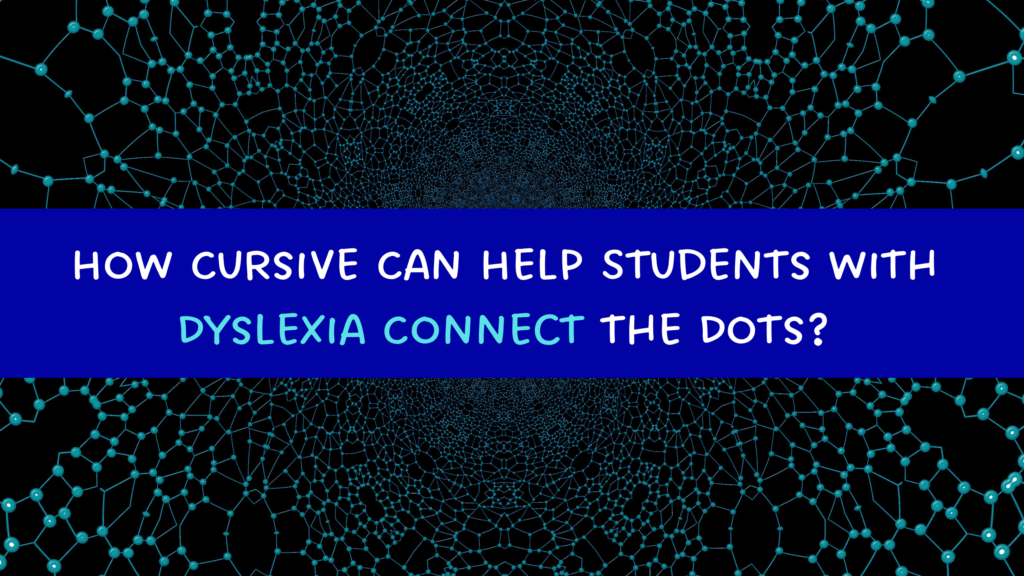Few people still write with pen and paper in today’s modern world, let alone in cursive script. Cursive writing is crucial for the sensorimotor part of the brain and cognitive development, according to researchers. When compared to typing or tracing the same letters, writing cursive letters by hand requires far more learning. The question remains, though, whether cursive writing still matters given the prevalence of smartphones, laptops, and tablets for reading and writing text or if it’s just a redundant teaching method.

So, what are the advantages of cursive handwriting when a machine can perform the same function? Learning cursive is good for children’s cognitive and visual development, according to science.
Cursive Handwriting and The Brain
Pushing a physical or virtual key on a keyboard is cognitively distinct from creating letters by hand using a pen or pencil. When learning, writing letters by hand helps students make the connection between their movements and what they perceive when they look at the letter on the page. The motion of the hand, the letter-related thinking, and the letter’s visual signal are all occurring at the same time. This is simultaneous reading and writing, a necessary skill.
This process is necessary for children to completely comprehend the English language and link words to muscle memory. Learning cursive handwriting helps youngsters develop their spelling abilities and helps them identify words when they read them later. As typing doesn’t need the same fine motor skills and simultaneous activity, it doesn’t have the same impact on the brain.
Cursive Makes Children Smarter
Cursive can make children more intelligent. Practicing handwriting helps the brain develop the ability to combine multiple types of information at once, including tactile and visual inputs, while using fine motor skills.
In today’s world, typing is a skill that everyone must master, yet cursive handwriting also has advantages. Although it can be challenging to master, it teaches organization skills and helps children come up with their own ideas and views. Cursive can be a part of a treatment plan for people with dyslexia to help with memory, hand-eye coordination, vision-related difficulties, and other brain functions.
Reading cursive and practicing cursive writing are crucial parts of a curriculum that strengthens children’s cognitive and visual abilities rather than letting handwriting disappear from schools.
Dyslexia at a Glance
- Specific learning disabilities in reading are known as dyslexia.
- Dyslexia is often characterized by difficulties with correct word recognition, spelling, and decoding.
- Dyslexia may cause problems with slowing down vocabulary growth and reading comprehension.
- Dyslexia may result in reading out loud and poor reading fluency.
- Dyslexia is neurological and often genetic.
- Dyslexia is not the outcome of poor instruction.
- Almost all people with dyslexia can become good readers and writers, with the proper support
How Cursive Handwriting Helps Students Overcome Dyslexia
Learning cursive, however, might mean the difference between academic failure and success for individuals with dyslexia, a learning disorder that impacts reading, spelling, and writing.
It Can Reduce the Rate of Mirror-Writing
There is a specific way to write each letter in cursive, which makes it incredibly uniform. This way of writing helps children in telling apart frequently misread letters like “b” and “d.” By specifically teaching cursive letter formations, these letters will stand out in children’s minds and be less likely to be mixed up later on. Their hands form a motor memory of the specific actions required to form each letter. The cursive versions of the letters ‘b’ and ‘d’ are completely different from their print equivalents, which are nearly identical to one another.
It Can Aid Memory
The entire writing process in cursive requires the brain to be alert and engaged. Accordingly, writing things down, which involves both the hands and the brain, aids in committing the words to long-term memory, which is something that children with dyslexia frequently struggle with. If children are studying for a test or writing down information they need to remember, this is especially helpful. So, the next time your children are studying for a test, tell them to pick up a pen and paper instead of a computer screen.
It Will be Helpful to Make them Ruicker Writers
Cursive is a faster writing style overall, despite the fact that it necessitates clear instruction and some initial effort. Children can write more quickly by combining the letters rather than concentrating on each one individually. When there is a deadline or when they need to copy notes off the whiteboard, this is really helpful.
It Can Improve Spelling
Another area that can be particularly challenging for children with dyslexia is spelling. They may frequently make mistakes like mixing together words and confusing letters. Historically, these would lead to lower test scores and a general decline in job quality. Children will be less prone to make these errors and can develop into confident spellers if the differences between each letter are emphasized through cursive handwriting. Cursive writing also enables children to view words as whole units rather than a collection of individual strokes. Additionally, it will lessen confusion and help them remember the proper spelling.
The dyslexia training program from I Empower, LLC can empower parents and educators with knowledge of the lookouts for dyslexia. It is our mission at I Empower, LLC that every educator, parent, and student knows the lookouts for dyslexia and the proper accommodations and interventions required to help those impacted lead lives in which they feel empowered and confident. Get in touch with us to know more about our dyslexia training online.
